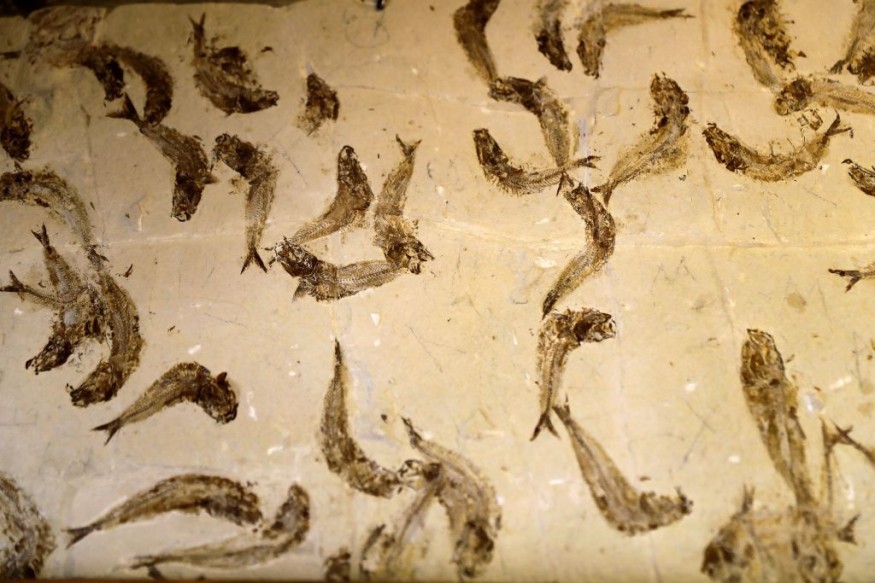A recent study on paleontology led the experts to discover one of the strangest fossils ever unearthed. The remains, originally from a fish, seem to be a good prehistoric bargain for the scientists. This is due to the creature's cranium having tiny fossils inside. According to the experts, the set of bones existed about nine million years ago.
Coprolites in Stargazer's Cranium

The bizarre microfossils are detected as coprolites. The remains were possibly left by scavengers that took advantage of the head of the fish after it died. The prime suspects were a group of worms, as they align with the data from the fossilized droppings. The main menu of the worms was the brain of the creature, along with many parts of the fish head.
According to a report by Science Alert, the worms excreted sets of feces as they scavenged through the head of the dead fish. The excretions were found as fossilized clusters and chains of oval coprolite beads. The entirety of the fossil inside the fish head measures 2.5 millimeters in length. The pellets may have accumulated over time, forming a long trail of poop.
Right after consuming the carcass of the prehistoric fish, the scavengers left behind pellets that are estimated to be over a hundred pieces. The number of poop was enough to fill the whole head of the fish.
The coprolite-filled fossil was found in Maryland's Calvert Cliffs. The place is considered a hotspot in the paleontology community. The majority of the fossils excavated in the area date from 18 to eight million years ago, all falling other the Miocene epoch.
The fish was identified as Astroscopus countermani, a species commonly known as 'stargazer.' The species dwell in deeper parts of the ocean where it perfected ambush strategy against its prey. The uniform excrement identified as coprolite pellets is collectively known in the scientific community as Coprulus oblongus.
The coprolite pellet deposits are found scattered across the site. The fossilized excrements can be seen in many members of the biodiversity where the head of stargazer fish was collected. Most of the coprolite remains were attached in a number of bivalve shells, fossilized snails, and preserved barnacles.
A separate coprolite set was also found in the site, with a measure of about 18 centimeters in length. The group is believed to be part of excrement from an ancient vertebrate, possibly a prehistoric crocodilian. The poop fossils were found with numerous tiny tunnels that are dug by either a feces-eating organism or an animal seeking a habitat.
ALSO READ : First Domesticated Hybrid Animal Are Super-Strength Donkeys That Are Faster, Stronger Than Horses
Suspected Origin of Coprolites in Fish Head
Miocene aquatic animals are abundant in the site. The group of creatures commonly discovered from the group of fish, sharks, seabirds, seals, and crocodiles. The cliff itself was also found with microcoprolites that are theorized to have been excreted by invertebrates. These sorts, according to the study, are not well-researched compared to the coprolites found in vertebrate animals.
Through X-ray spectroscopy, the microcoprolites were found to have high concentrations of compositions such as phosphate and calcium. According to Calvert Marine Museum expert and author of the study Stephen Godfrey, these are common elements that are usually extracted from fossilized feces. They explained that the pellets are most probably products of smaller insects that are fond of eating dead animals, including worms, insects, snails, sea squirts, and clams.
The feature of the pellets, which filled the entire five0centimeter width of the skull, convinced experts that the suspect is an invertebrate that could easily stretch and squeeze through tight conditions. With that said, Godfrey and colleagues bet in polychaete and other types of worms more than bigger organisms such as snails and clams. The study was published in the journal Research in Paleontology and Stratigraphy, titled "Coprolites From Calvert Cliffs: Miocene Fecal Pellets And Burrowed Crocodilian Droppings From The Chesapeake Group Of Maryland, U.S.A."
RELATED ARTICLE : High-Tech Analysis on Dinosaur Fossils Could Tell Humans How to Live Sustainably, Deal With Current Climate Change
Check out more news and information on Paleontology in Science Times.












